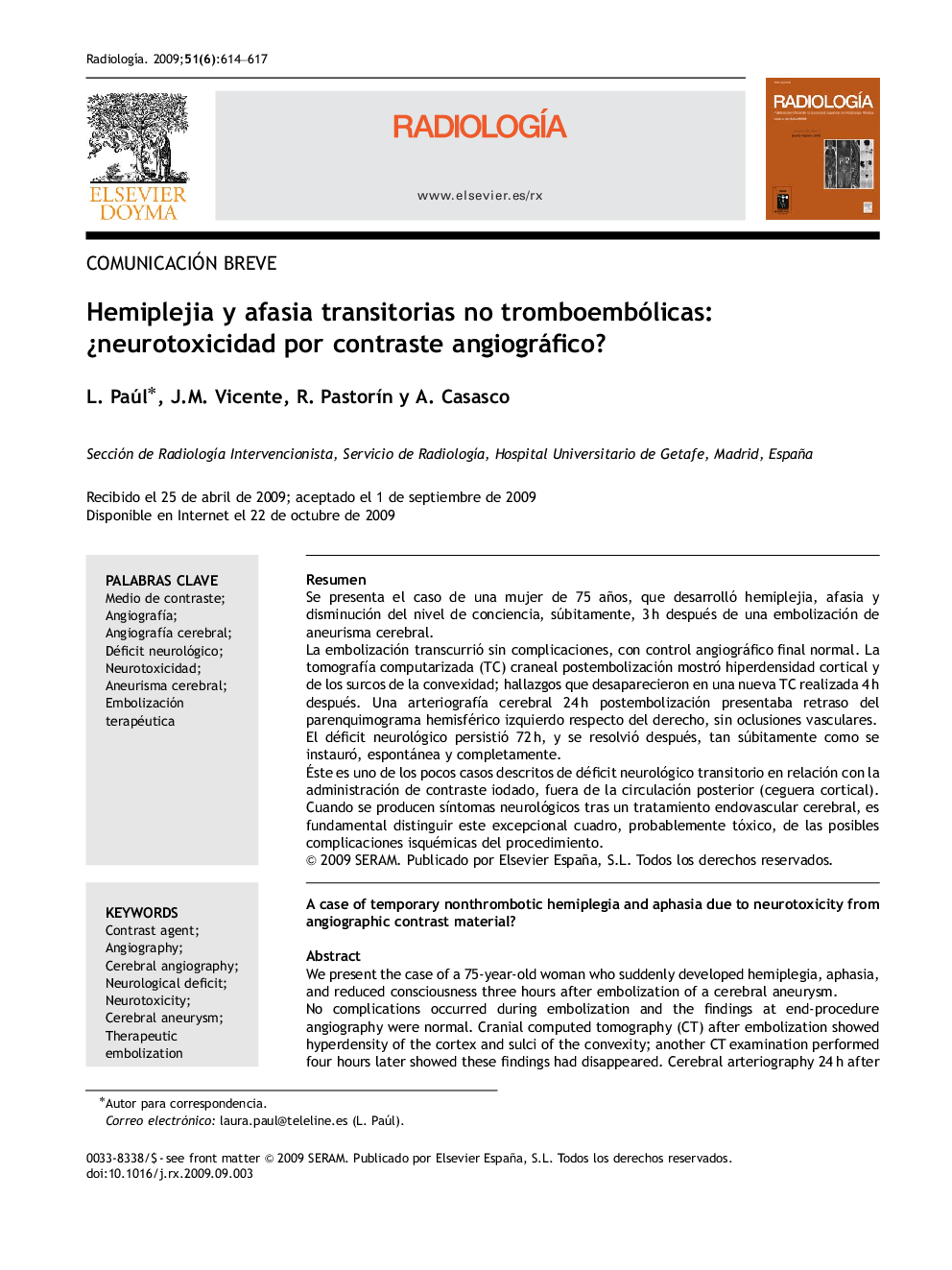| Article ID | Journal | Published Year | Pages | File Type |
|---|---|---|---|---|
| 4246094 | Radiología | 2009 | 4 Pages |
ResumenSe presenta el caso de una mujer de 75 años, que desarrolló hemiplejia, afasia y disminución del nivel de conciencia, súbitamente, 3 h después de una embolización de aneurisma cerebral.La embolización transcurrió sin complicaciones, con control angiográfico final normal. La tomografía computarizada (TC) craneal postembolización mostró hiperdensidad cortical y de los surcos de la convexidad; hallazgos que desaparecieron en una nueva TC realizada 4 h después. Una arteriografía cerebral 24 h postembolización presentaba retraso del parenquimograma hemisférico izquierdo respecto del derecho, sin oclusiones vasculares.El déficit neurológico persistió 72 h, y se resolvió después, tan súbitamente como se instauró, espontánea y completamente.Éste es uno de los pocos casos descritos de déficit neurológico transitorio en relación con la administración de contraste iodado, fuera de la circulación posterior (ceguera cortical). Cuando se producen síntomas neurológicos tras un tratamiento endovascular cerebral, es fundamental distinguir este excepcional cuadro, probablemente tóxico, de las posibles complicaciones isquémicas del procedimiento.
We present the case of a 75-year-old woman who suddenly developed hemiplegia, aphasia, and reduced consciousness three hours after embolization of a cerebral aneurysm.No complications occurred during embolization and the findings at end-procedure angiography were normal. Cranial computed tomography (CT) after embolization showed hyperdensity of the cortex and sulci of the convexity; another CT examination performed four hours later showed these findings had disappeared. Cerebral arteriography 24 h after embolization showed delayed blood flow to the parenchyma of the left hemisphere compared to the right but no vascular occlusion.The neurological deficit lasted 72 h and resolved spontaneously and completely as suddenly as it developed.This is one of the few cases of temporary neurological deficit related to iodinated contrast administration to be reported outside the posterior circulation (cortical blindness). When neurological symptoms occur after endovascular procedures in the brain, it is fundamental to distinguish this rare clinical syndrome of probable toxic origin from possible ischemic complications of the procedure.
